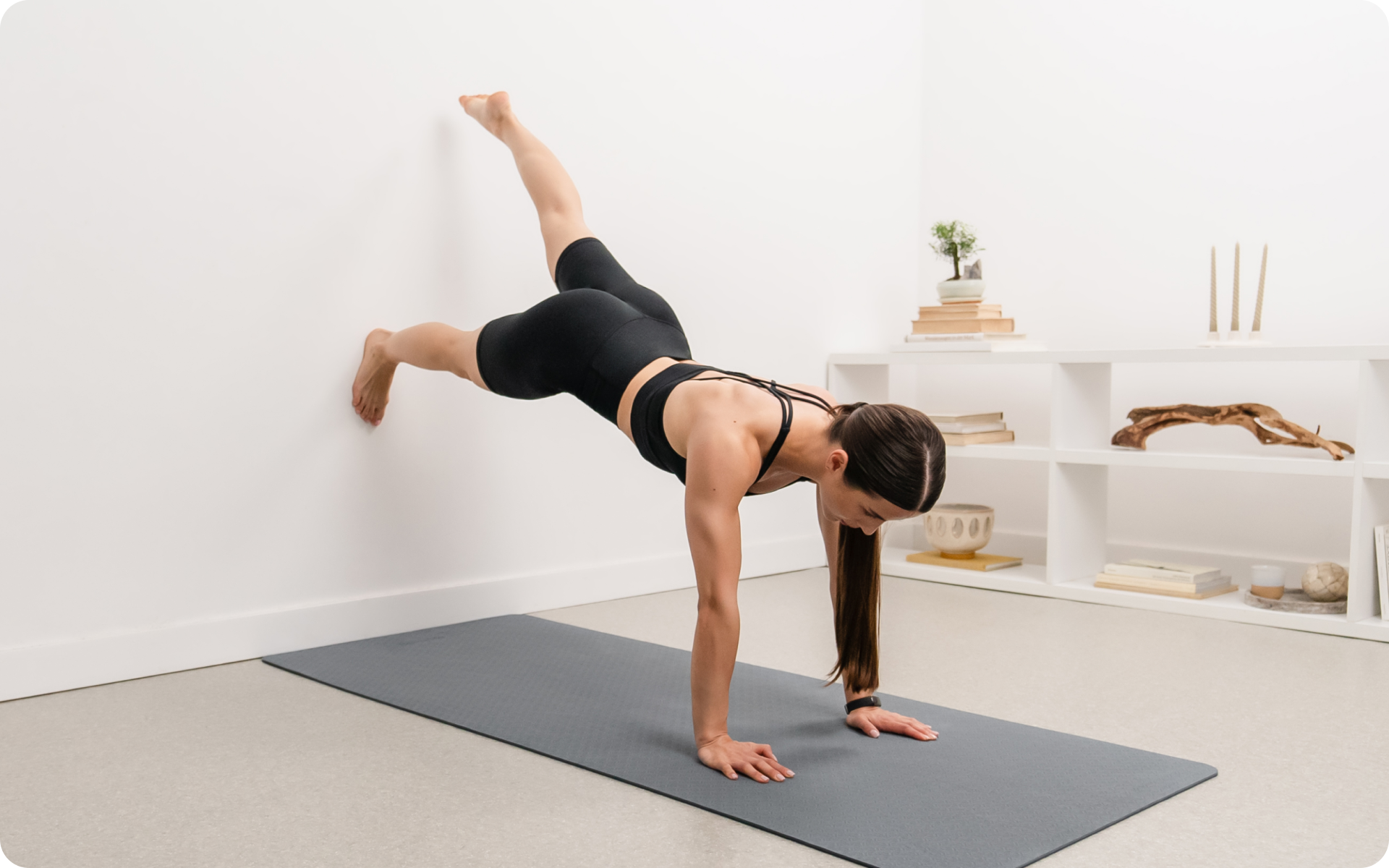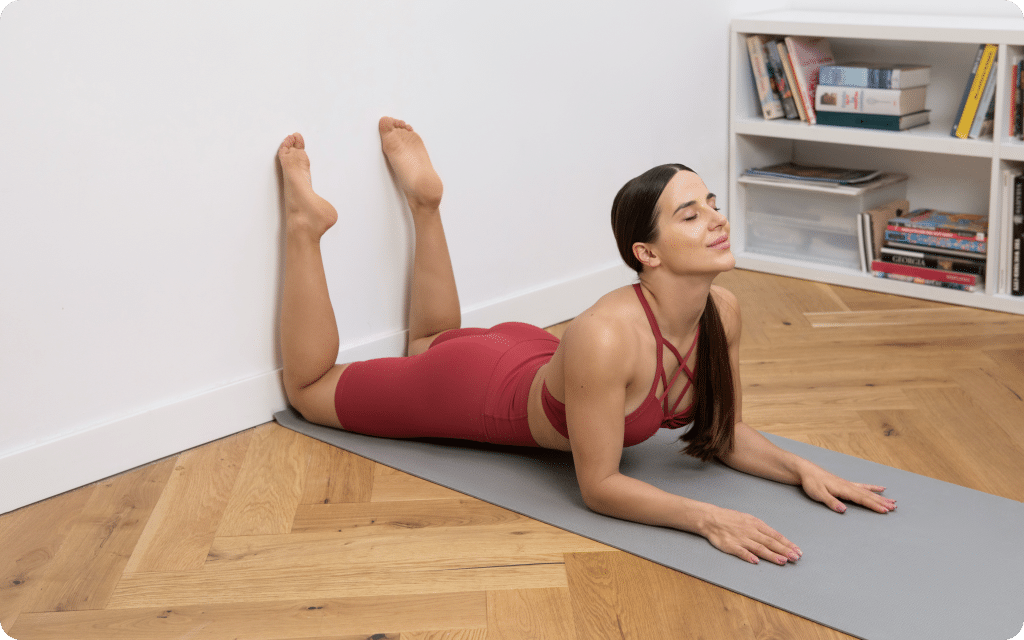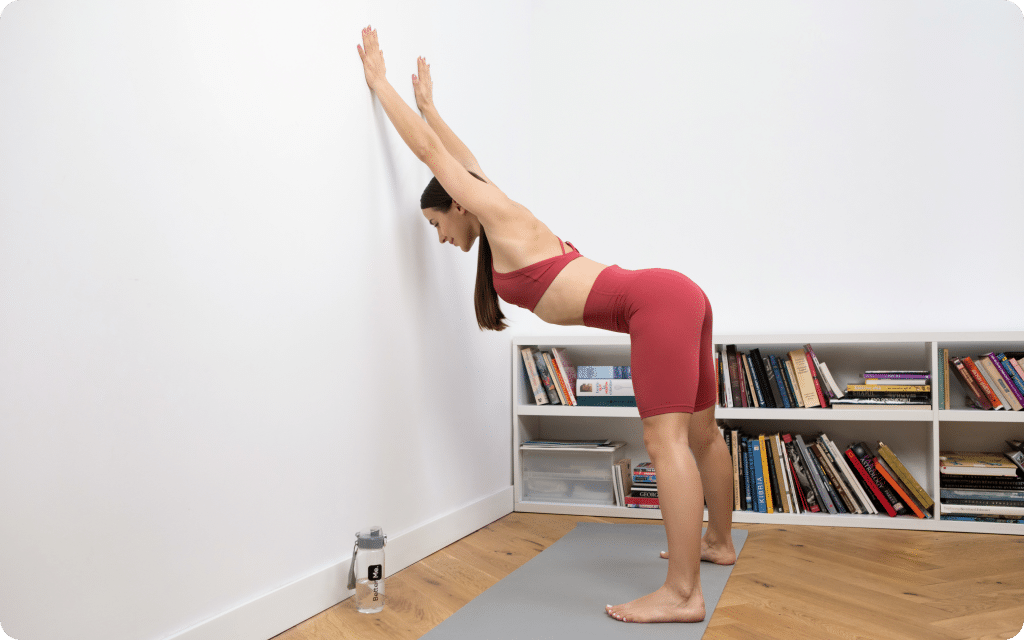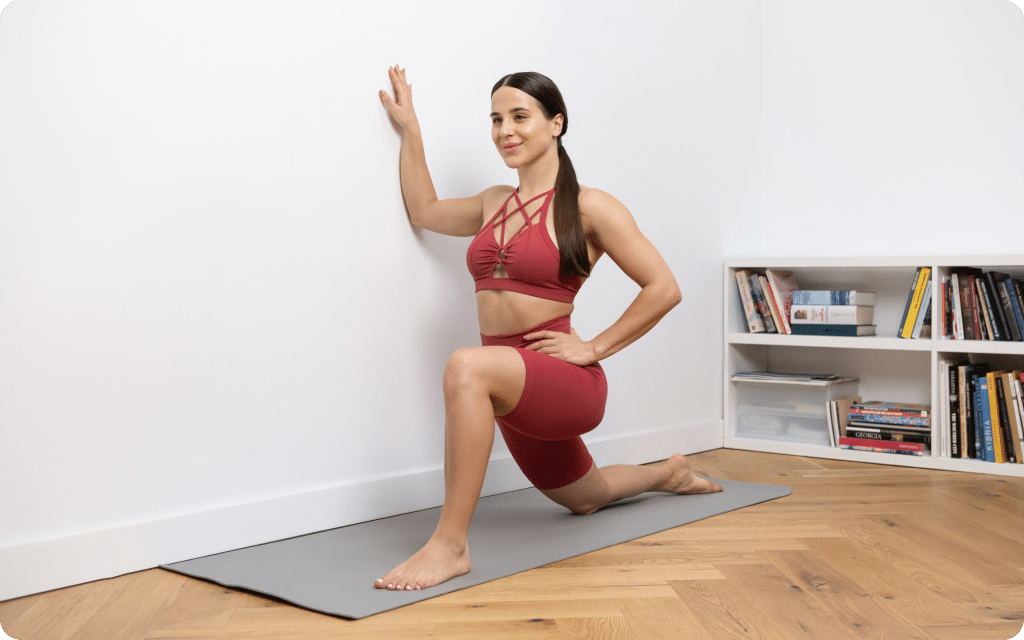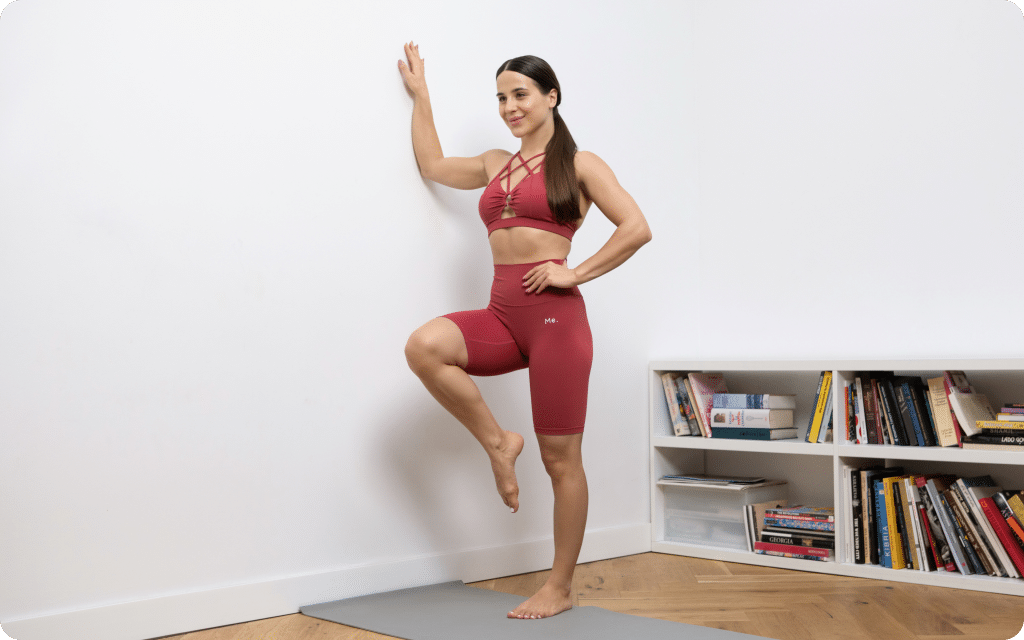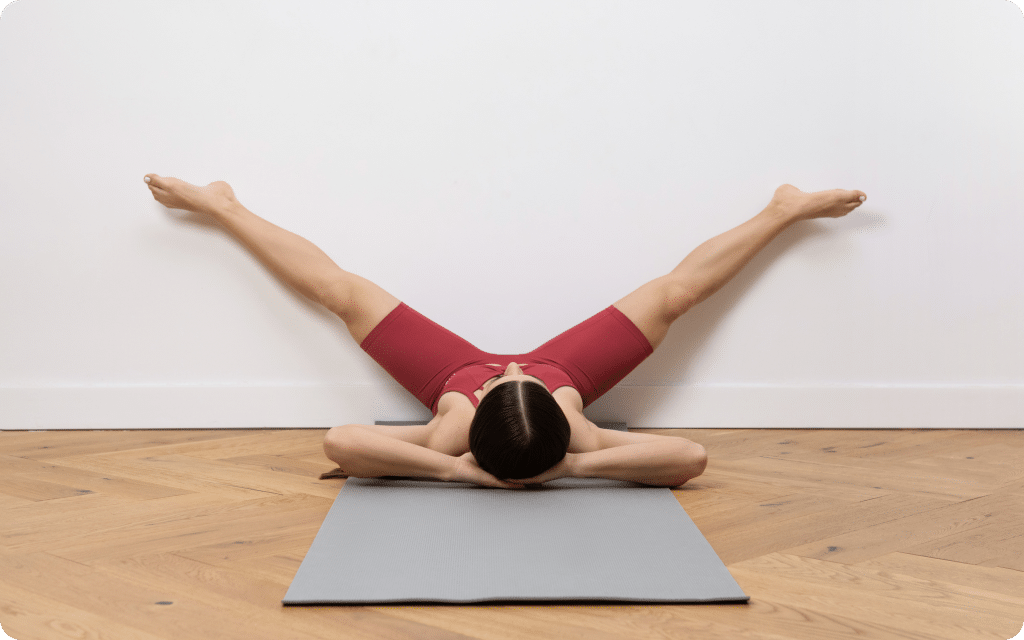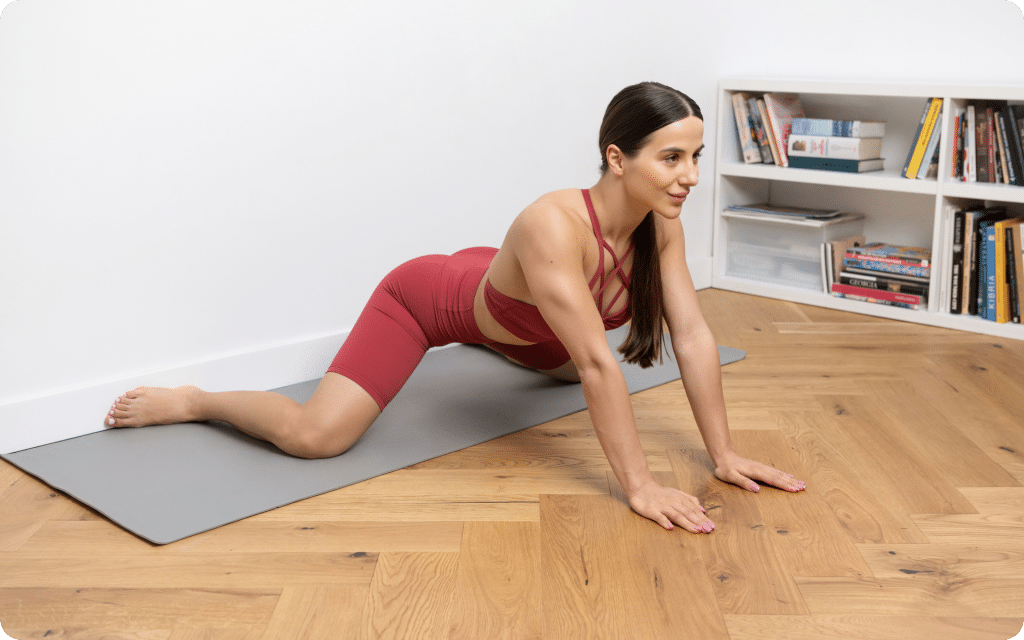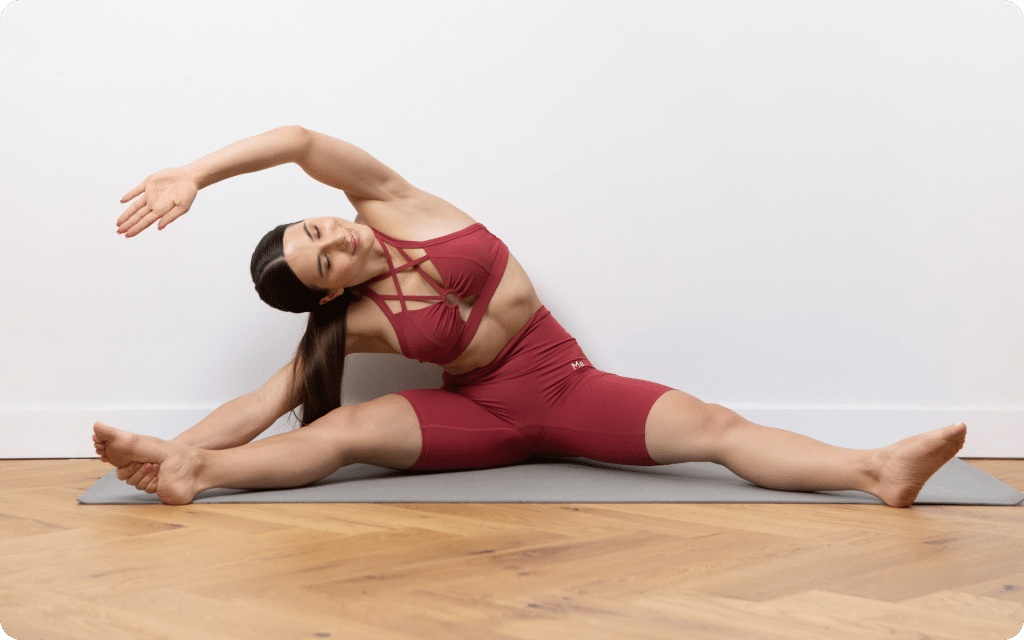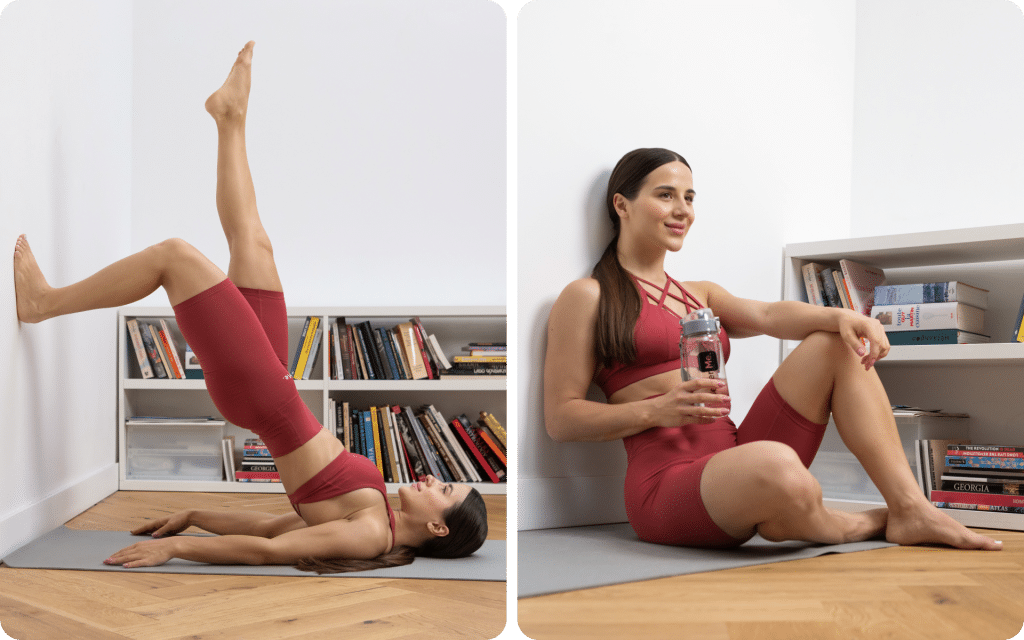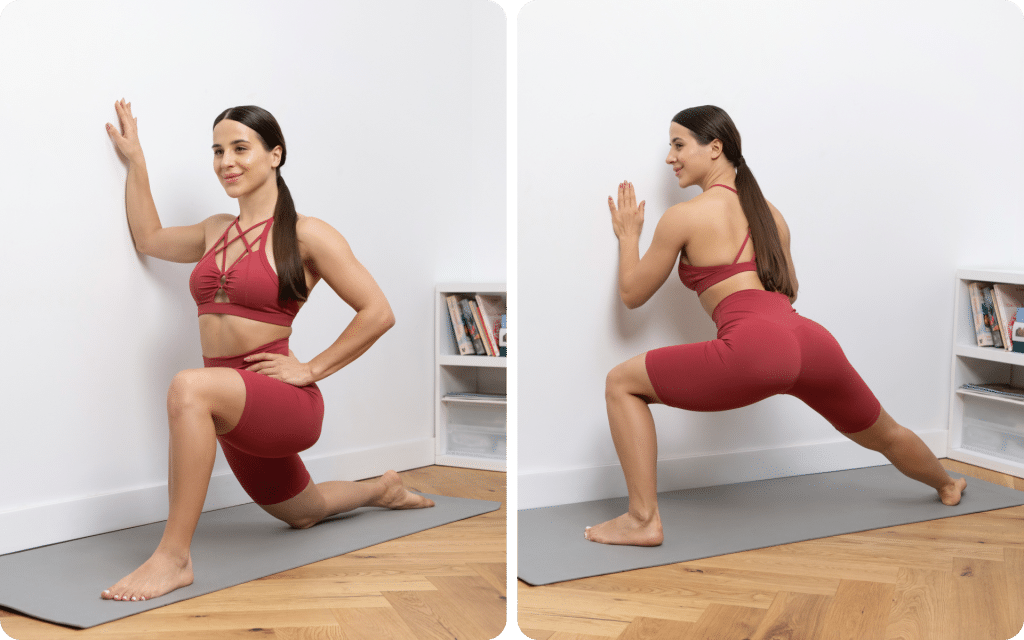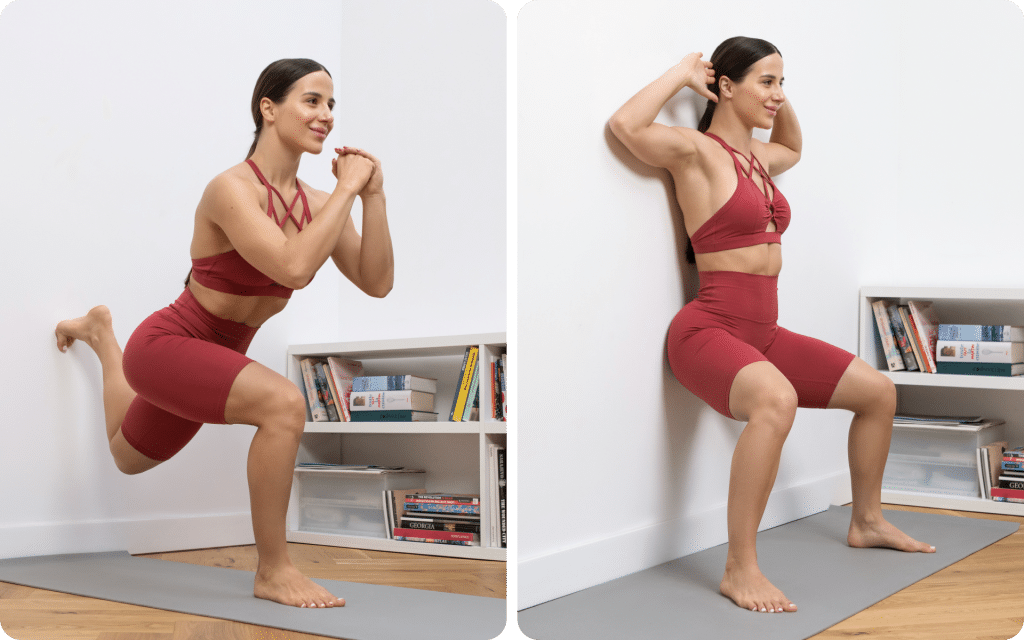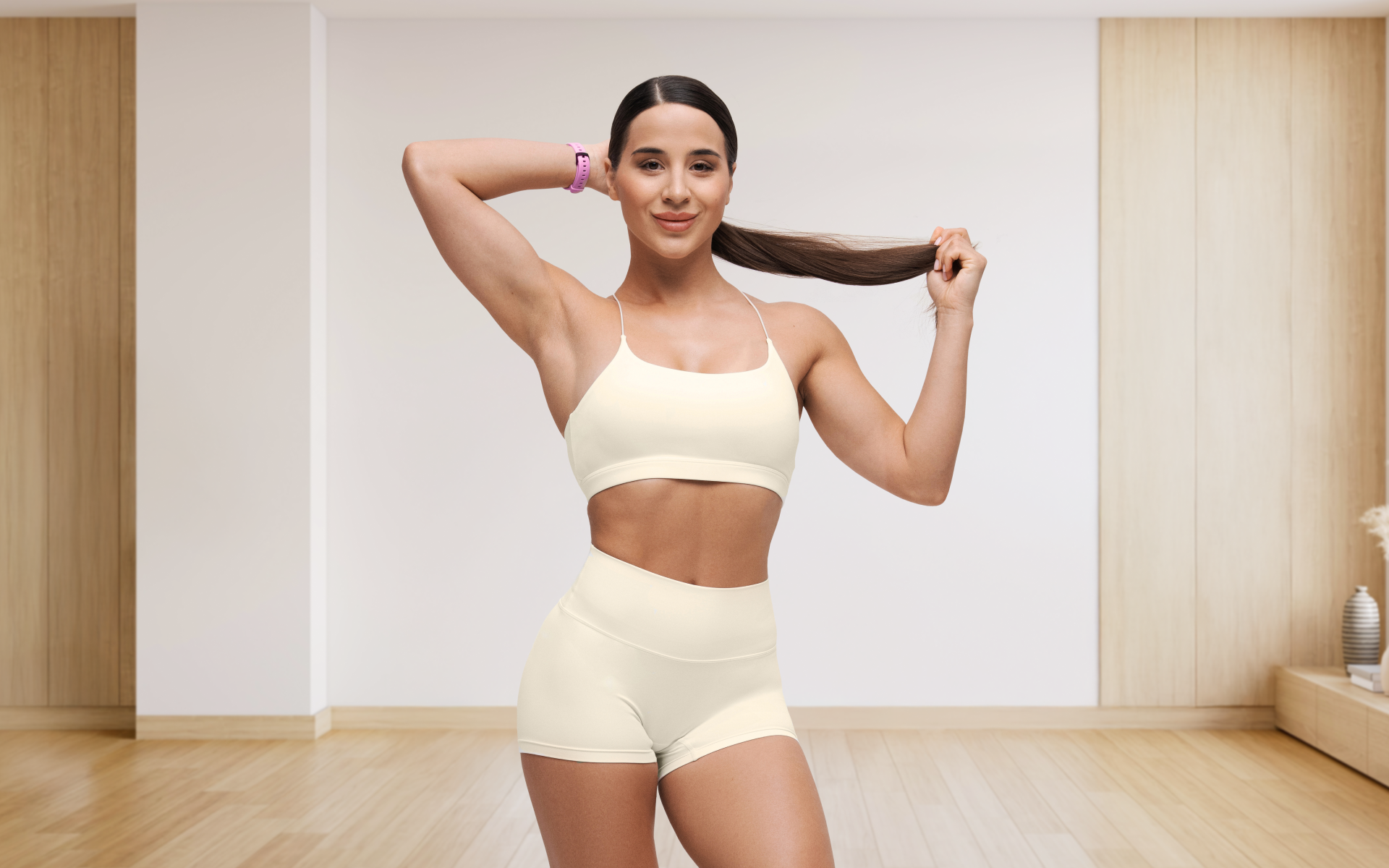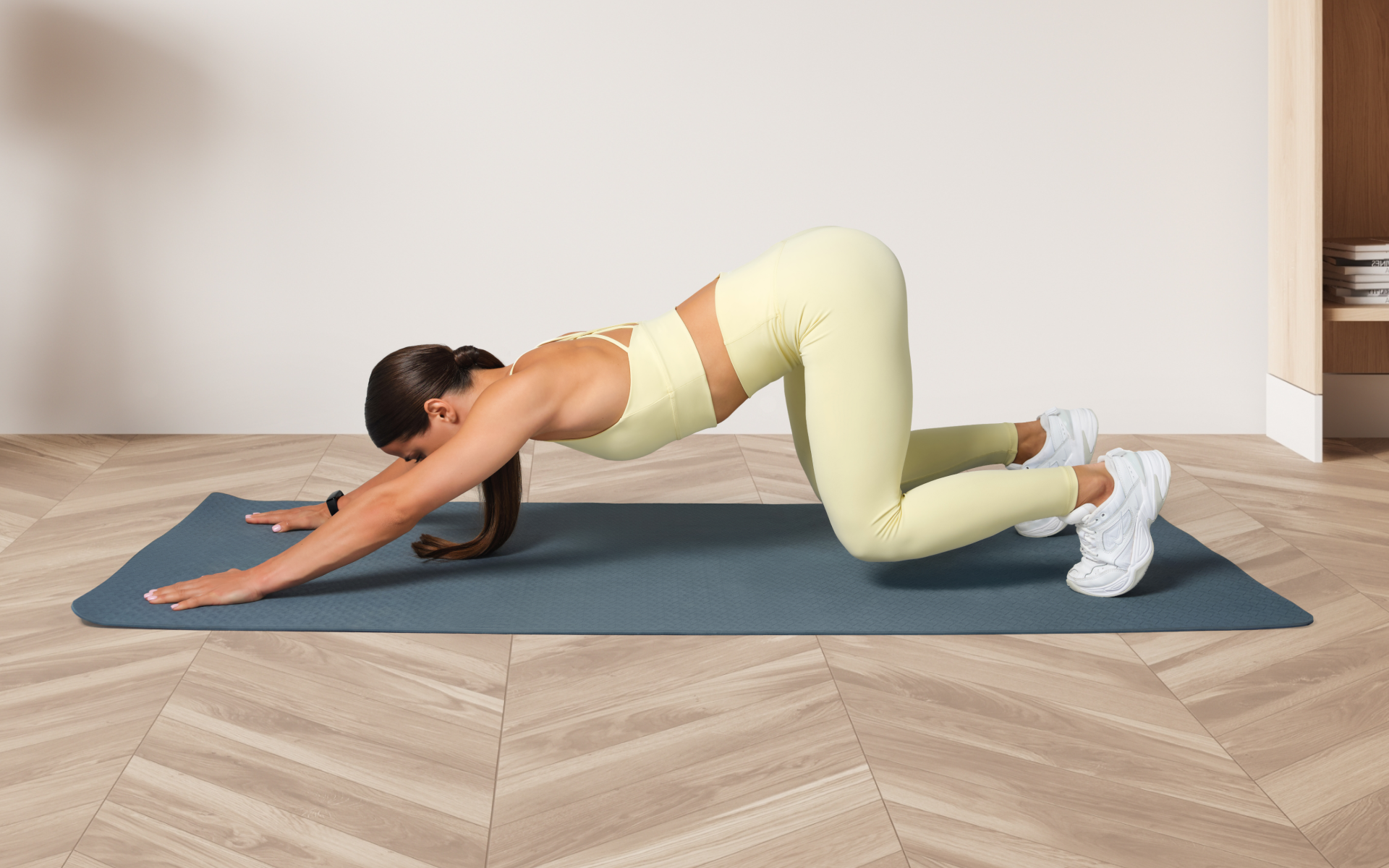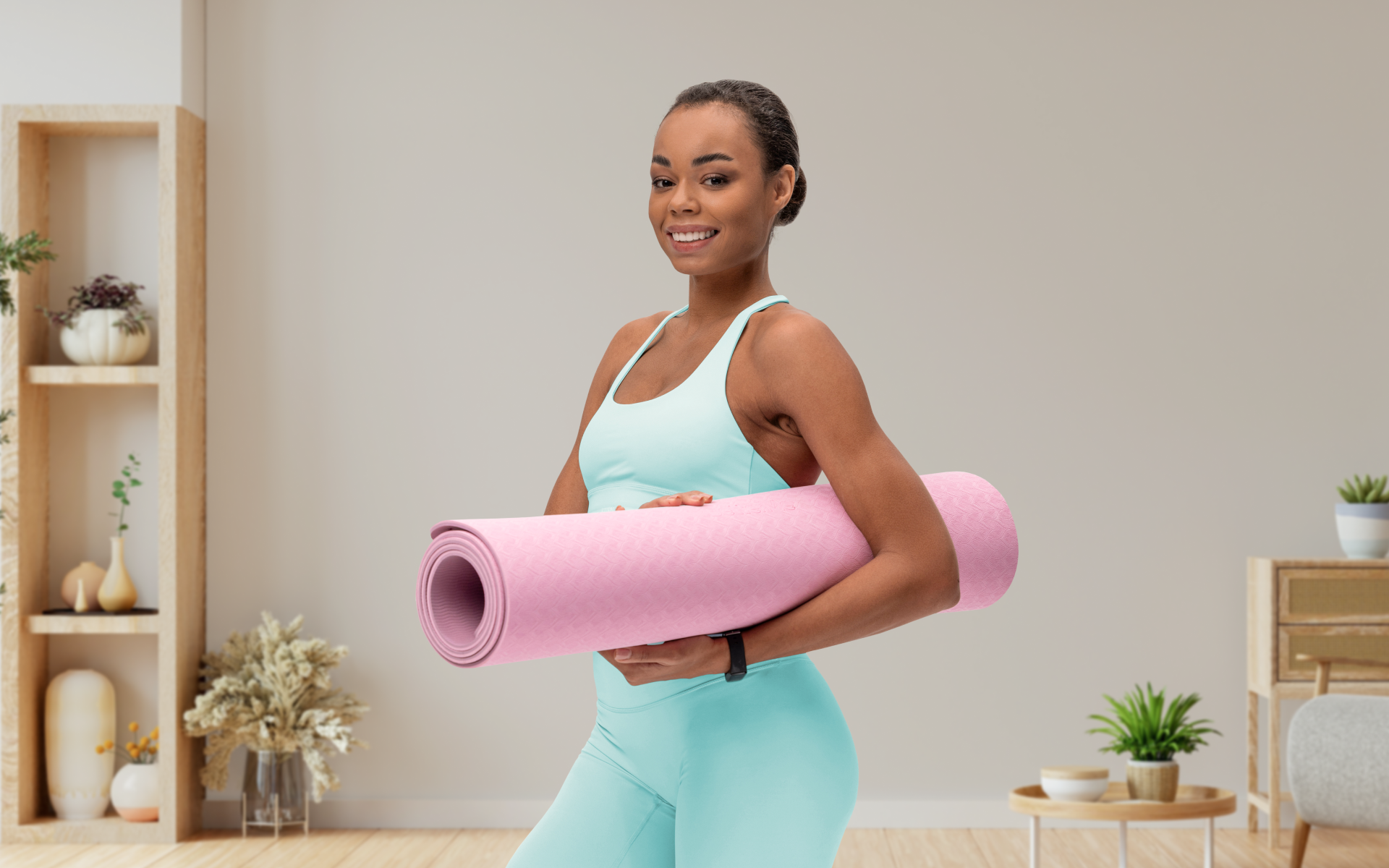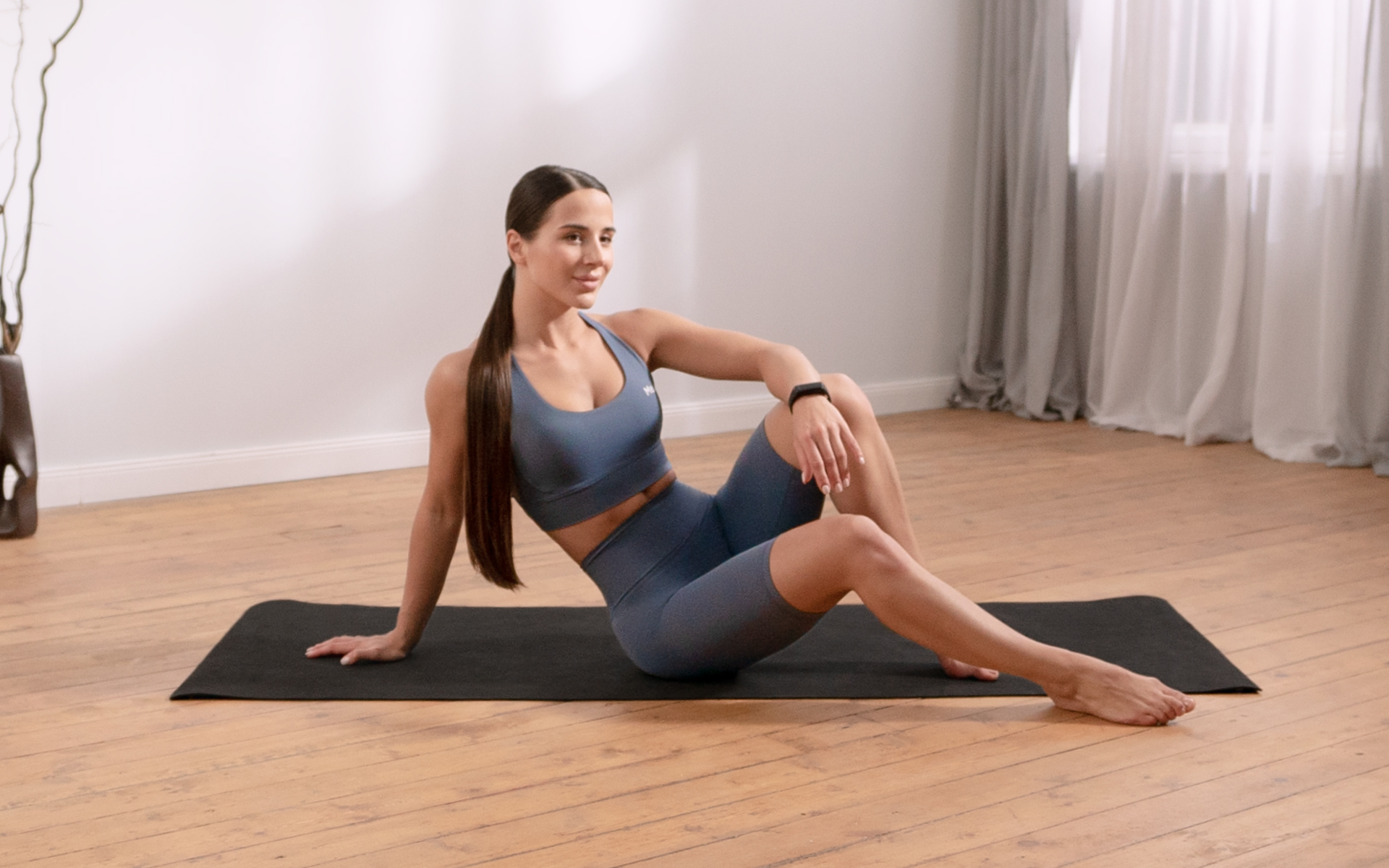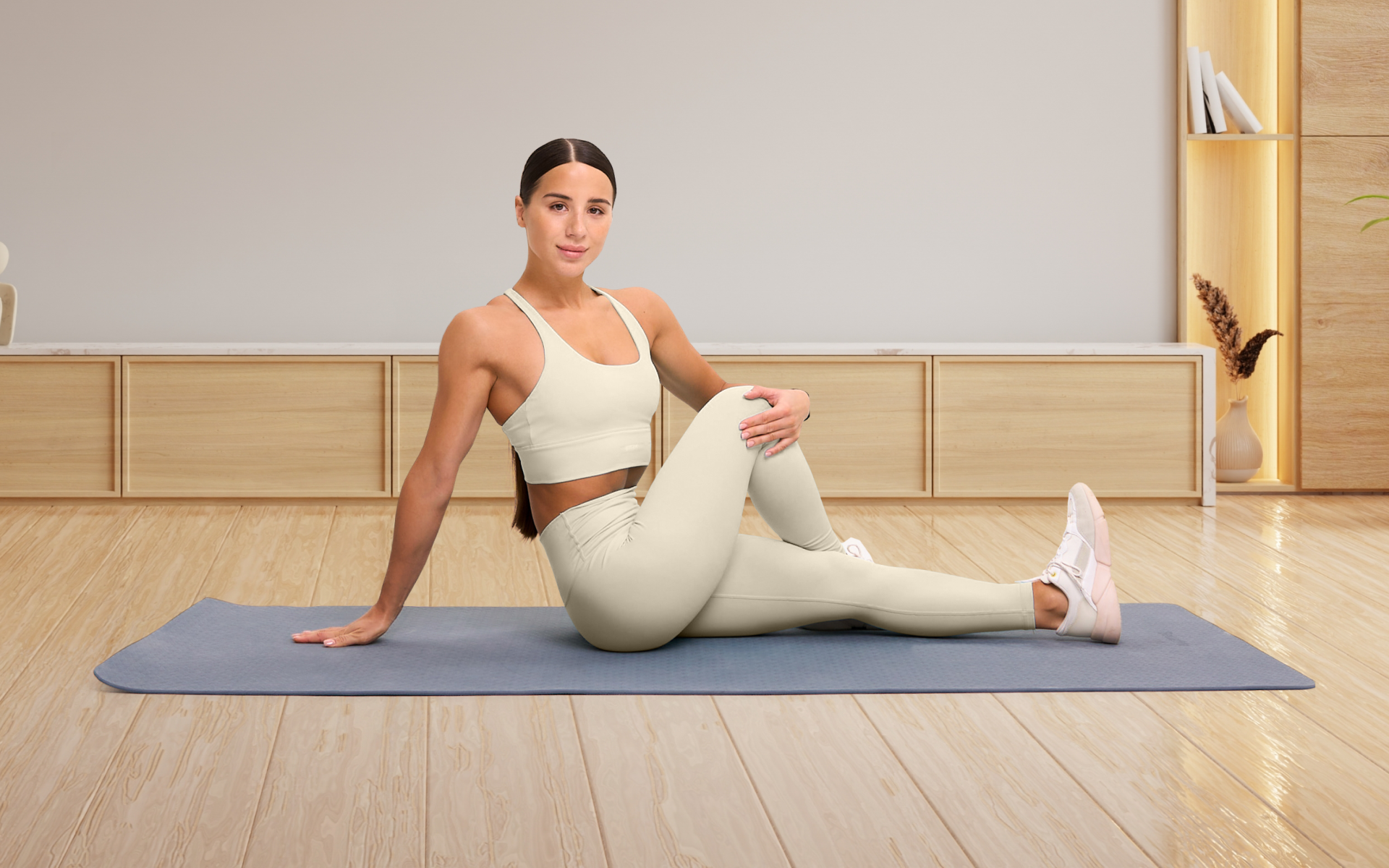Wall Pilates has transformed from a niche fitness practice to a mainstream movement that’s capturing attention across social media platforms and fitness studios worldwide. This low-impact exercise method combines traditional Pilates principles with the stability and support of a wall, which makes it accessible to beginners while still challenging for experienced practitioners.
The appeal lies in its simplicity and effectiveness. You don’t need expensive equipment or a gym membership – just a wall and some floor space. But with countless programs and challenges flooding the market, how do you choose the right one for your fitness journey?
This comprehensive guide examines the science behind wall Pilates effectiveness, explores real weight loss outcomes, and reveals the best wall Pilates challenge for beginners in 2025.
Is Wall Pilates Actually Effective?
Yes, wall Pilates is genuinely effective for building strength, improving flexibility, and enhancing core stability. Research has suggested that Pilates exercises, including wall-based variations, provide measurable improvements in muscular endurance and postural control (1).
The wall acts as a proprioceptive feedback system, helping your body understand its position in space. This enhanced awareness leads to better muscle activation patterns and more effective workouts. When you press against the wall during exercises, you’re creating isometric contractions that engage multiple muscle groups simultaneously (2).
Wall Pilates offers several scientifically proven advantages:
- Improved postural alignment: The wall provides immediate feedback about spinal positioning (3).
- Enhanced proprioception: Wall contact improves body awareness and movement quality (4, 5)
- Reduced injury risk: The support minimizes strain on vulnerable joints and muscles (6).
- Progressive difficulty: You can easily modify intensity by changing your distance from the wall
The effectiveness stems from the principle of closed-chain exercises, where your body works against a fixed point. This creates functional strength that translates directly to daily activities and athletic performance.
BetterMe: Health Coaching app helps you achieve your body goals with ease and efficiency by helping to choose proper meal plans and effective workouts. Start using our app and you will see good results in a short time.
Has Anyone Lost Weight with Wall Pilates?
Research has shown that wall Pilates can contribute to weight loss when it’s combined with proper nutrition, though the mechanism differs from traditional cardio exercises.
A 2022 systematic review published in Applied Sciences (MDPI) evaluated Pilates interventions and their impact on functional body composition. The review found evidence that Pilates can improve body composition by reducing body fat percentage and increasing lean mass, particularly when practiced consistently for at least 8 weeks (1).
Wall Pilates uses the same controlled, mindful movements and muscle engagement strategies, but with the added benefit of wall support for alignment and stability.
Wall Pilates can promote weight loss through several mechanisms:
Metabolic efficiency: The continuous muscle engagement during wall exercises elevates your metabolic rate for up to 24 hours post-workout, which is known as excess post-exercise oxygen consumption (EPOC) (7).
Muscle building: Each session builds lean muscle mass, which increases your resting metabolic rate as musculoskeletal tissue burns roughly 15-20 calories per kilogram per day (8).
Stress reduction: The mindful nature of Pilates reduces cortisol levels (9), which can contribute to weight gain, particularly around the midsection (10).
Read more: Somatic Wall Pilates: A New Era Of Mind-Body Movement
How Often Should You Do Wall Pilates?
Many experts recommend performing wall Pilates 3-4 times per week for optimal results, with each session lasting 20-30 minutes. This frequency allows adequate recovery time while maintaining the progressive overload necessary for strength and flexibility improvements.
A 2024 systematic review in the Journal of Sports Medicine and Physical Fitness analyzed 14 studies on Pilates frequency and found that participants who exercised 3-4 times weekly showed significant improvements in strength, flexibility, and body composition (11).
If you’re new to wall Pilates, start with:
- Weeks 1-2: 2 sessions per week, 15-20 minutes each
- Weeks 3-4: 3 sessions per week, 20-25 minutes each
- Weeks 5+: 3-4 sessions per week, 25-30 minutes each
This gradual progression prevents overuse injuries and allows your body to adapt to the movement patterns. The research backs that consistency trumps intensity for beginners (12).
Experienced practitioners can safely perform wall Pilates:
- 4-5 times per week for general fitness
- 5-6 times per week when training for specific goals
- Daily, if sessions are kept under 20 minutes
Your muscles need 24-48 hours to recover and adapt between sessions. During this recovery period, muscle fibers repair and strengthen, leading to improved performance (13).
Ignoring rest days can lead to overtraining syndrome, characterized by decreased performance, persistent fatigue, and increased injury risk (14).
Listen to your body and adjust frequency based on:
- Energy levels and sleep quality
- Muscle soreness and joint stiffness
- Overall stress and life demands
- Progress toward your fitness goals
For more detailed guidance on structuring your practice, explore our comprehensive wall Pilates workout plan.
Do Wall Pilates Challenges Really Work?
Fitness challenges are psychologically effective tools for establishing exercise habits and achieving short-term goals. Research in behavioral psychology has demonstrated that structured challenges create accountability, social support, and clear milestones that enhance adherence to exercise programs.
A 2024 study published in Journals of Sports examined the effectiveness of fitness challenges and found that participants were more likely to continue exercising after completing a structured challenge compared to those who followed self-directed programs (15).
Challenges work because they tap into fundamental psychological principles:
Goal setting theory: Clear, time-bound objectives increase motivation and performance. A 28-day challenge provides a specific target that feels achievable yet meaningful.
Social cognitive theory: Group participation and shared experiences enhance self-efficacy and commitment. Many wall Pilates challenges include community elements that provide encouragement and accountability.
Habit formation: Research by Dr. Phillippa Lally at University College London showed that it takes an average of 66 days to form a habit (16). A 28-day challenge provides the initial momentum needed to establish consistent exercise patterns.
Participating in a well-designed wall Pilates challenge offers several advantages:
- Progressive structure: Good challenges gradually increase difficulty, which prevents plateaus and ensures continued improvement.
- Educational component: Quality programs teach proper form, breathing techniques, and modification options.
- Community support: Many challenges include online groups or forums where participants share experiences and motivation.
- Measurable outcomes: Structured assessments help track progress in strength, flexibility, and endurance.
Not all fitness challenges are created equal. Effective wall Pilates challenges share these characteristics:
- Realistic daily time commitment: 20-30 minutes maximum
- Progressive difficulty: Each week builds upon previous skills
- Modification options: Accommodates different fitness levels
- Expert instruction: Led by certified Pilates instructors
- Recovery integration: Includes rest days and gentle movement options
What Is the Best Wall Pilates Challenge to Try in 2025?
The BetterMe 28-Day Wall Pilates Challenge stands out as the most comprehensive and effective program for beginners and intermediate practitioners. This evidence-based program combines progressive exercise sequences, expert instruction, and behavioral support to maximize results.
Why BetterMe?
BetterMe’s approach integrates cutting-edge exercise science with practical application, which makes it the best wall Pilates challenge app that is available. The program addresses the most common barriers to fitness success: lack of time, unclear instructions, and insufficient motivation.
Personalized programming: The app customizes workouts based on your current fitness level, available time, and specific goals. This individualized approach increases adherence rates compared to generic programs (17).
Expert-designed progressions: Certified Pilates instructors designed each workout sequence to build systematically on previous sessions. The progression follows established motor learning principles that optimize skill acquisition and strength development.
Comprehensive support system: Beyond exercise videos, the program includes nutritional guidance, habit-tracking tools, and access to a supportive community of practitioners.
Whether you’re a workout beast or just a beginner making your first foray into the world of fitness and dieting – BetterMe has a lot to offer to both newbies and experts! Install the app and experience the versatility first-hand!
The BetterMe platform leverages technology to enhance user experience:
HD video instruction: Crystal-clear demonstrations with multiple camera angles ensure proper form
Real-time form feedback: AI-powered movement analysis provides instant corrections
Progress analytics: Detailed tracking of strength improvements, flexibility gains, and consistency metrics
Social features: Connect with other challenge participants for motivation and accountability
BetterMe collaborated with exercise physiologists and biomechanics researchers to ensure every workout maximizes effectiveness while minimizing injury risk. The program incorporates findings from recent studies on wall-based exercises and motor learning principles.
Those who are looking for additional variety can complement this program with our wall Pilates 21-day challenge for continued progression.
Does the 28-Day Pilates Challenge Actually Work?
The 28-day timeframe is strategically chosen based on habit formation research and motor learning principles. Studies in behavioral neuroscience have indicated that 21-30 days represents the minimum time that is needed to establish new neural pathways and create lasting behavioral changes (18).
Dr. Maxwell Maltz, a plastic surgeon and researcher, first popularized the 21-day habit formation concept in the 1960s. However, more recent research by Dr. Phillippa Lally found that habit formation actually takes an average of 66 days, with simple habits forming faster than complex ones (16).
What Can Be Achieved in 28 Days
While complete habit automation may require more time, 28 days provides sufficient time for significant physiological and psychological adaptations:
Neuromuscular adaptations: Within 2-3 weeks, your nervous system becomes more efficient at recruiting muscle fibers and coordinating movement patterns. This leads to improved strength and movement quality before visible muscle changes occur (19).
Postural improvements: Research shows that consistent Pilates practice can improve postural alignment (20). The proprioceptive benefits of wall exercises accelerate this process (4, 5).
Psychological momentum: Successfully completing a 28-day challenge creates self-efficacy and confidence that supports continued exercise participation.
The Science of Motor Learning
Motor learning occurs in three distinct phases, each perfectly suited to different stages of a 28-day program:
Cognitive phase (Days 1-7): Focus on understanding movement patterns and basic form
Associative phase (Days 8-21): Refining technique and building consistency
Autonomous phase (Days 22-28): Movements become more automatic, allowing focus on intensity and variation
Realistic Expectations
A well-structured 28-day wall Pilates challenge can deliver:
- Strength gains: improvement in core stability and muscular endurance
- Flexibility increases: improvement in hip and spinal mobility
- Postural awareness: noticeable improvements in daily posture and movement quality
- Habit establishment: a strong foundation for continued practice beyond the challenge
However, significant body composition changes typically require 8-12 weeks of consistent practice combined with appropriate nutrition. The 28-day challenge serves as an excellent foundation for longer-term transformation.
For those who are interested in exploring different program lengths, our best wall Pilates app offers various challenge durations to match your goals and schedule.
Read more: 5 Advanced Wall Pilates Moves to Try at Home
How Long Until You See Results from a Wall Pilates Challenge?
Results from wall Pilates appear in phases, with different benefits manifesting at various time points. Understanding this timeline helps set realistic expectations and maintain motivation throughout your journey.
Weeks 1-2: Foundation and Initial Adaptations
During the first two weeks, expect primarily neurological adaptations:
Days 3-5: Improved body awareness and movement coordination
Days 7-10: Reduced muscle tension and increased range of motion
Days 10-14: Enhanced balance and proprioception
These early changes occur as your nervous system adapts to new movement patterns. While you may not see visible changes yet, you’ll likely feel more centered and aware of your posture throughout the day.
BetterMe: Health Coaching app helps you achieve your body goals with ease and efficiency by helping to choose proper meal plans and effective workouts. Start using our app and you will see good results in a short time.
Weeks 3-4: Strength and Endurance Development
The third and fourth weeks typically bring more noticeable improvements:
Increased exercise capacity: Ability to hold positions longer and perform more repetitions
Improved core stability: Better control during daily activities such as lifting and bending
Enhanced sleep quality: Many practitioners report improved sleep patterns due to reduced muscle tension
Research has indicated that muscular endurance improvements become measurable after 2-3 weeks of consistent training (21).
Weeks 5-8: Visible and Functional Changes
Month two brings the most dramatic transformations:
Postural improvements: Friends and family may comment on your improved posture
Body composition changes: Slight muscle definition and potential weight loss
Functional strength gains: Easier performance of daily activities
Weeks 8-12: Comprehensive Transformation
After two to three months of consistent practice:
- Significant strength increases: 40-60% improvement in core strength measures
- Flexibility gains: 20-30% increase in spinal and hip mobility
- Body composition changes: Visible muscle tone and potential 5-15 pound weight loss
- Pain reduction: Many practitioners experience reduced back and neck pain
Factors That Influence Timeline
Several variables affect how quickly you’ll see results:
Consistency: Daily practice accelerates results compared to sporadic sessions
Starting fitness level: Beginners often see faster initial improvements
Proper form: Correct technique maximizes effectiveness and prevents plateaus
Complementary lifestyle factors: Adequate sleep, nutrition, and stress management support recovery and adaptation
Remember that progress isn’t always linear – some weeks may feel more challenging than others, which is completely normal and part of the adaptation process.
Both Pilates and yoga offer unique benefits, which makes direct comparison difficult. Pilates focuses primarily on core strength, precision, and controlled movement patterns, while yoga emphasizes flexibility, mindfulness, and spiritual well-being. Research has suggested that Pilates may be superior for developing core strength and muscular endurance. A 2019 comparative study found that participants who practiced Pilates for 12 weeks showed greater improvements in core stability compared to yoga practitioners (22). However, yoga excels in flexibility development and stress reduction. The choice between them is dependent on your primary goals: choose Pilates for strength and postural improvement, yoga for flexibility and stress management, or practice both for comprehensive benefits. Wall Pilates can contribute to belly fat reduction, but spot reduction is physiologically impossible. Fat loss occurs systemically throughout the body based on genetics, hormones, and overall caloric balance. However, wall Pilates supports belly fat reduction through several mechanisms: For optimal belly fat reduction, combine wall Pilates with cardiovascular exercise and a balanced, calorie-controlled diet. For beginners, perform 15-20 wall Pilates exercises per session, 3-4 times per week. Each exercise should be held for 15-30 seconds or performed for 8-12 repetitions, depending on the movement type. A typical daily session might include: Advanced practitioners can perform 20-25 exercises per session or extend hold times to 45-60 seconds. The key is maintaining proper form throughout each movement rather than rushing through high repetition counts. Quality always trumps quantity in Pilates practice. Focus on precise, controlled movements rather than maximizing exercise volume. Yes, 20 minutes of daily Pilates practice can produce significant results when it’s performed consistently with proper form and progressive intensity. The effectiveness of 20-minute sessions depends on: Intensity and focus: Concentrated, challenging exercises maximize time efficiency For general fitness and postural improvement, 20 minutes a day is sufficient. However, for significant body composition changes or advanced strength goals, you may need longer sessions (30-45 minutes) or additional activities such as cardiovascular exercise and strength training.Frequently Asked Questions
Is Pilates better than yoga?
Can wall Pilates reduce belly fat?
How many wall Pilates exercises should you do a day?
Is 20 minutes of Pilates a day enough to see results?
Consistency: Daily practice creates better adaptations than sporadic, longer sessions
Progressive overload: Gradually increasing difficulty maintains continued improvement
Proper form: Quality movement patterns optimize muscle activation
The Bottom Line
Wall Pilates represents a perfect intersection of accessibility, effectiveness, and sustainability in modern fitness. The evidence clearly demonstrates its capacity to improve strength, flexibility, and overall well-being when it’s practiced consistently and correctly.
The BetterMe 28-Day Wall Pilates Challenge emerges as the premier choice for beginners who are looking for a structured, scientifically-backed introduction to this transformative practice. Its combination of expert instruction, progressive programming, and technological support creates an optimal environment for success.
Remember that lasting fitness transformation requires patience, consistency, and realistic expectations. While you may experience initial improvements within days, the most significant changes occur over months of dedicated practice.
The 28-day challenge serves as your foundation – a launching pad for a lifelong journey of strength, flexibility, and body awareness.
DISCLAIMER:
This article is intended for general informational purposes only and does not serve to address individual circumstances. It is not a substitute for professional advice or help and should not be relied on for making any kind of decision-making. Any action taken as a direct or indirect result of the information in this article is entirely at your own risk and is your sole responsibility.
BetterMe, its content staff, and its medical advisors accept no responsibility for inaccuracies, errors, misstatements, inconsistencies, or omissions and specifically disclaim any liability, loss or risk, personal, professional or otherwise, which may be incurred as a consequence, directly or indirectly, of the use and/or application of any content.
You should always seek the advice of your physician or other qualified health provider with any questions you may have regarding a medical condition or your specific situation. Never disregard professional medical advice or delay seeking it because of BetterMe content. If you suspect or think you may have a medical emergency, call your doctor.
SOURCES:
- Efficacy of Pilates in Functional Body Composition: A Systematic Review (2022, mdpi.com)
- The influence of surface angle on trunk muscle activity during Pilates based exercises (2018, sciencedirect.com)
- Effects of Pilates on Body Posture: A Systematic Review (2024, pubmed.ncbi.nlm.nih.gov)
- Fingertip contact influences human postural control (1994, link.springer.com)
- An online pilates exercise program is effective on proprioception and core muscle endurance in a randomized controlled trial (2021, link.springer.com)
- Pilates (2011, pmc.ncbi.nlm.nih.gov)
- Energy expenditure during a Pilates exercise session: a systematic review (2025, scielo.br)
- The Anatomy of Resting Energy Expenditure: Body Composition Mechanisms (2019, pmc.ncbi.nlm.nih.gov)
- Benefits of Pilates on Depression, Anxiety, and Stress: An Observational Study Comparing People Practicing Pilates to Non-Active Controls (2025, mdpi.com)
- Stress, cortisol, and obesity: a role for cortisol responsiveness in identifying individuals prone to obesity (2016, sciencedirect.com)
- Pilates Dosage in Rehabilitation of Patients With Musculoskeletal Conditions: A Scoping Review (2024, pmc.ncbi.nlm.nih.gov)
- Relationship of Consistency in Timing of Exercise Performance and Exercise Levels Among Successful Weight Loss Maintainers (2019, pubmed.ncbi.nlm.nih.gov)
- The Importance of Recovery in Resistance Training Microcycle Construction (2024, pmc.ncbi.nlm.nih.gov)
- Beyond physical exhaustion: Understanding overtraining syndrome through the lens of molecular mechanisms and clinical manifestation (2025, sciencedirect.com)
- The 100-Days: Physical Exercise and Challenges to Assess, Maintain and Improve Physical Fitness During Lockdown (2024, mdpi.com)
- How long does it take to form a habit? (2009, ucl.ac.uk)
- An Evaluation of the Effect of App-Based Exercise Prescription Using Reinforcement Learning on Satisfaction and Exercise Intensity: Randomized Crossover Trial (2024, sciencedirect.com)
- Neuroplasticity and Clinical Practice: Building Brain Power for Health (2016, pmc.ncbi.nlm.nih.gov)
- Neuromuscular adaptations to resistance training in elite versus recreational athletes (2025, pubmed.ncbi.nlm.nih.gov)
- Effects of Pilates on Body Posture: A Systematic Review (2024, pubmed.ncbi.nlm.nih.gov)
- Adaptations to Endurance and Strength Training (2018, pmc.ncbi.nlm.nih.gov)
- The effects of Pilates and yoga participant’s on engagement in functional movement and individual health level (2019, pubmed.ncbi.nlm.nih.gov)
